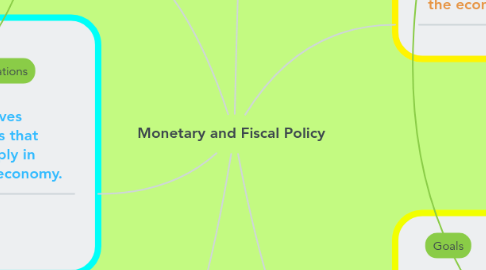Monetary and Fiscal Policy
Door Urita Abdelmasih


1. Monetary policy:- involves Federal Reserve actions that change the money supply in order to influence the economy.
1.1. Open market operations:- are the sales and purchase of marketable federal government securities.
1.2. Adjusting the Reserve Requirement:- the Fed sets the required reserve ratio (RRR) for all depository institutions, which affects the money supply through the deposit multiplier formula.
1.3. Adjusting the Discount Rate:- the discount rate is the interest rate that the Fed charges when it lends money to other banks.
2. Approaches to Monetary Policy
2.1. Expansionary Policy
2.1.1. Buy bonds on the open market
2.1.2. Lower the reserve requirement
2.1.3. Reduce the discount rate
2.2. Contractionary Policy
2.2.1. Sell bonds on the open market
2.2.2. Raise the reserve requirement
2.2.3. Increase the discount rate
3. Limitation of Monetary Policy
3.1. Short-Term Effects
3.2. Policy Lags
3.3. Timing Issues
4. Fiscal policy:- the federal government’s use of taxes and government spending to affect the economy.
4.1. Discretionary fiscal policy refers to actions selected by the government to stabilize the economy.
4.2. Policy features called automatic stabilizers work automatically to steady the economy.
4.2.1. Public Transfer Payments
4.2.2. Progressive Income Taxes
5. The Purpose of Fiscal Policy
5.1. Expansionary fiscal policy is a plan to increase aggregate demand and stimulate the economy.
5.1.1. Economic activity increases as businesses increase production, hire more workers, and increase investment.
5.1.2. More workers have more income to spend on goods and services.
5.1.3. Aggregate demand increases, resulting in economic growth.
5.2. Contractionary fiscal policy is a plan to reduce aggregate demand and slow the economy.
5.2.1. Economic activity decreases as businesses cut production and lay off workers.
5.2.2. Workers have less income to spend on goods and services.
5.2.3. Aggregate demand decreases, bring inflation under control.
